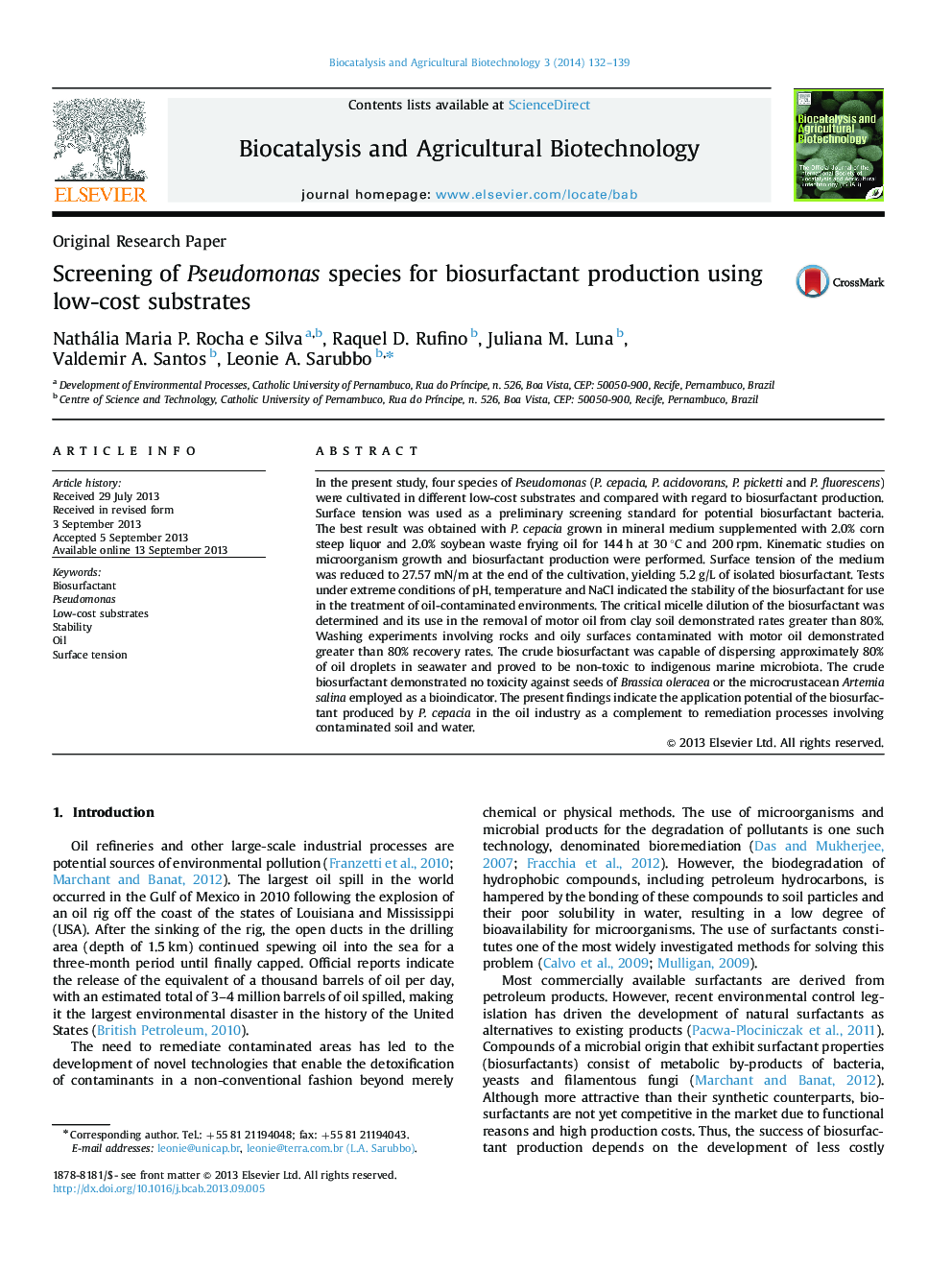| Article ID | Journal | Published Year | Pages | File Type |
|---|---|---|---|---|
| 2075498 | Biocatalysis and Agricultural Biotechnology | 2014 | 8 Pages |
In the present study, four species of Pseudomonas (P. cepacia, P. acidovorans, P. picketti and P. fluorescens) were cultivated in different low-cost substrates and compared with regard to biosurfactant production. Surface tension was used as a preliminary screening standard for potential biosurfactant bacteria. The best result was obtained with P. cepacia grown in mineral medium supplemented with 2.0% corn steep liquor and 2.0% soybean waste frying oil for 144 h at 30 °C and 200 rpm. Kinematic studies on microorganism growth and biosurfactant production were performed. Surface tension of the medium was reduced to 27.57 mN/m at the end of the cultivation, yielding 5.2 g/L of isolated biosurfactant. Tests under extreme conditions of pH, temperature and NaCl indicated the stability of the biosurfactant for use in the treatment of oil-contaminated environments. The critical micelle dilution of the biosurfactant was determined and its use in the removal of motor oil from clay soil demonstrated rates greater than 80%. Washing experiments involving rocks and oily surfaces contaminated with motor oil demonstrated greater than 80% recovery rates. The crude biosurfactant was capable of dispersing approximately 80% of oil droplets in seawater and proved to be non-toxic to indigenous marine microbiota. The crude biosurfactant demonstrated no toxicity against seeds of Brassica oleracea or the microcrustacean Artemia salina employed as a bioindicator. The present findings indicate the application potential of the biosurfactant produced by P. cepacia in the oil industry as a complement to remediation processes involving contaminated soil and water.
